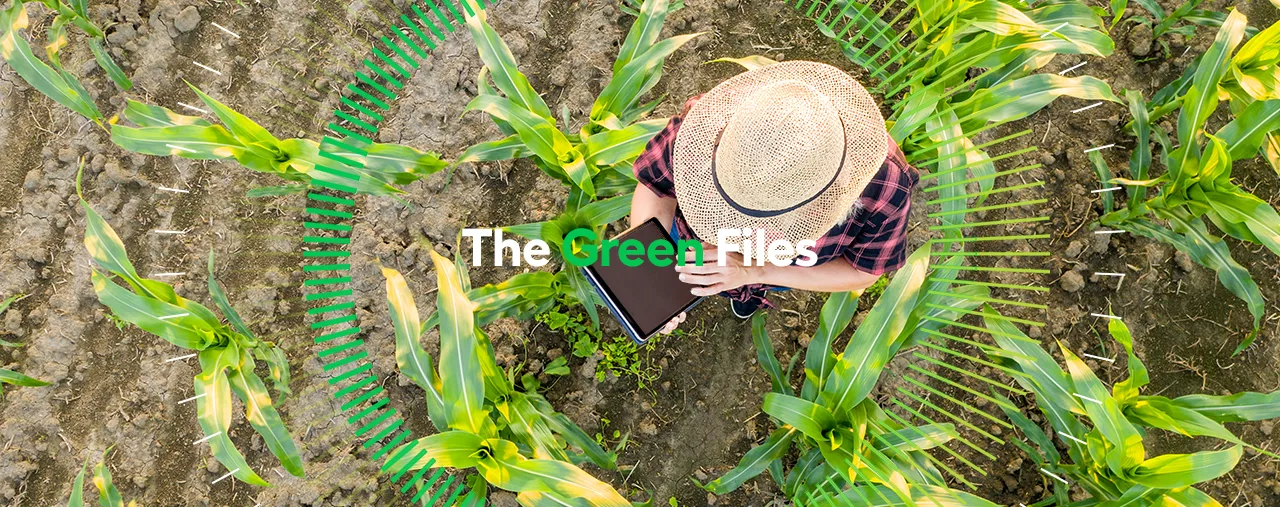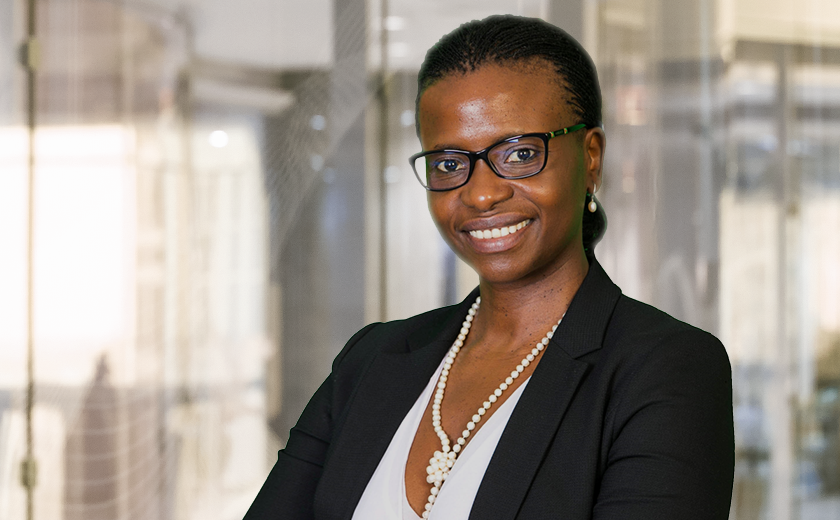
Josephine Wapakabulo on harvesting a greener future from Australia’s wide brown land
The Green Files is a unique CEFC series where we talk to the people making a difference in the race to net zero emissions.
Across the globe countries are committing to cutting their emissions, alongside Australia which is targeting net zero by 2050. That’s driving an accelerated and large-scale transition to renewable energy, storage, energy efficiency and the potential to ‘electrify everything’. So far so good. But it’s not the whole story. Even with these very substantial changes, getting to net zero requires something more, which is where carbon sequestration comes in. Carbon sequestration is the process of capturing carbon dioxide from the atmosphere and then storing it – which means it can effectively complement other emissions reduction efforts on the pathway to net zero. For a continent as big as Australia it’s particularly exciting to hear that the science behind soil carbon sequestration is gathering momentum. But while there’s cause for growing excitement about the role of soil carbon in combatting climate change, the stats show that uptake remains slow.
Enter Downforce Technologies. The UK-based startup combines satellite imaging with other data sets to help farmers and land managers analyse their property’s soil health, providing them with real-time data about how much carbon they could be storing and advice on how to reach those levels. With farmers managing more than half of the Australian landmass, equivalent to more than two per cent of the global land mass, it explains why Downforce Technologies decided to launch its operation ‘down under’. It’s a win for Australian farmers looking to improve their land – and earn some carbon credits in the process. And with Australia being home to five per cent of the world’s land area, it’s a potential win for the planet too.
Leading Downforce Technologies on this mission is CEO Josephine Wapakabulo. A visionary entrepreneur with a PhD in data standards, Josephine has worked variously as an electrical engineer and an executive, at places as diverse as Rolls-Royce and human rights organisation Walk Free. We caught up with Josephine to ask her about her career background and to get her take on the natural capital sector in Australia.
Josephine Wapakabulo, CEO, Downforce Technologies
Your resume takes a lot of interesting twists and turns, running from engineer to CEO (with many stops in between). Is there a throughline that’s brought you to where you are now?
There’s definitely a thread! To me, all these roles have been about getting innovative ideas and businesses off the ground. That’s been true whether I’ve been launching new technologies at Rolls-Royce or disrupting modern slavery at Walk Free. The challenge of building something from an idea has been a constant. And I love that challenge.
That’s basically your job now at Downforce Technologies – to take a startup and lead it into the future. Looking back on your previous jobs, were there any key events that shaped you as a leader?
I’d just joined the strategic research centre at Rolls-Royce, and it was my job to launch this innovative technology they’d developed. It was a big task but my team was this exceptional group of really clever engineers. Not only did we do it, but within nine months we won a technology innovation award. That was a marker for me early in my career about working with teams: you are only as good as all the members of your team. Every role counts, and when you’re building a company, every person is vital. As a leader you have to pull on everyone’s strengths.
Downforce Technologies is doing exciting work in the natural capital space. What exactly is the company’s goal, and how are you achieving it?
It’s our mission to make every hectare count to achieve global climate, biodiversity and food security goals. The owners, or stewards, of those hectares are often trying to balance those goals. But to make good decisions they need data and insights, which Downforce Technologies provides. To do this, we’ve created a platform where landowners put in their coordinates and we bring in millions of data points – based on satellite data, environmental surveys and a broad range of other data sets – and amalgamate them so we can answer the questions they’re asking, whether it’s about carbon or biodiversity metrics. We can basically tell you what your land’s carbon story has been since 2017, and how that’s been impacted by, say, drought, or some of the farming interventions you’ve introduced. And we can tell you what you could achieve too including how much more carbon you could store – we call that realisable potential – and what activities you could do to build up that carbon profile.
There are lots of ways to combat climate change. Downforce Technologies focuses on soil. How come?
Until I started at Downforce Technologies, even I didn’t fully appreciate how important soil is to addressing the climate issue. I’d assumed it was all about moving towards greener energy sources. And while we do need to transition away from traditional energy sources, we also have to drive activity towards regenerative agricultural practices, such as sequestering carbon in soil. Studies show that soil is the largest carbon sink, more than vegetation and biomass or anything else we could do with the atmosphere. It represents a massive opportunity.
What’s inspiring you in the natural capital sector at the moment?
What’s really great are the new standards that are coming out, whether through the UN Climate Change Conference or the private sector – things like the Taskforce on Nature-related Financial Disclosures. There’s a momentum that’s building to understand the importance of nature-based solutions to the climate goals we’re trying to achieve. Now more private sector companies and governments are starting to realise that this problem won’t be solved solely by transitioning away from existing energy sources. What we do with our land is just as critical. For example, the Climate Change Authority released a fact sheet showing that agriculture was responsible for 13 per cent of Australia’s greenhouse emissions. But forestry and land use have also stored more emissions than they released over the past eight years. That momentum is really inspiring.
There’s a lot of activity in Australia’s natural capital sector, but there are still a lot of untapped opportunities. Where are you seeing the most significant investment gaps?
In my view, an investment gap signals a gap in two other fronts: policy and incentives. We need policy to adequately value and protect our natural capital assets. Policy needs to give people a kick to realise that this is valuable. And then they need the right incentive structure, whether it’s to incentivise landowners or stewards to prioritise emission reduction, or to incentivise businesses and governments to invest in them.
Once you have a good policy framework for incentivisation and you have regulatory certainty, you’re reducing the risk. Once you have that environment, the investment flows. Then it becomes a matter of growing communication and collaboration between industry, government and communities, and generating that understanding about natural capital, just like we did with the energy transition side. Most people, even if they’re not in the sector, understand that we need solar and wind. I think we need a really big communication drive, so it’s not just seen as a farmer thing or something only certain people should know.
Let’s cast our minds to the year 2050. What will the Australian natural capital sector look like by then and what do we have to do to get there?
Building soil organic carbon levels takes time, so 2050 is the right year to look at. Achieving those organic soil levels won’t have occurred due to regenerative farming alone. It’ll be regenerative farming combined with the right levels of conservation and more R&D into what soil carbon sequestration can do. That goes back to policy support incentivising those practices, and companies like Downforce Technologies working with landowners and stewards to show exactly what’s possible. Because one of the benefits of Downforce Technologies is that we can provide measurements for a small property, but we can also do a whole state or a whole country. And we can show people: You’re here now, and you can get to here in this period of time, if you do this and that. With the right data and tools, we can achieve this together. That’s the future. It’s great. And it’s hopeful.
Downforce Technologies has been selected for the ‘CleanTech Agri-Food Accelerator’ with SparkLabs Cultiv8, taking place this week in Orange, NSW, and will be delivering keynotes at the EcoSummit in June, and Digital Agrifood Summit in October.
Learn more about Downforce Technologies here.





